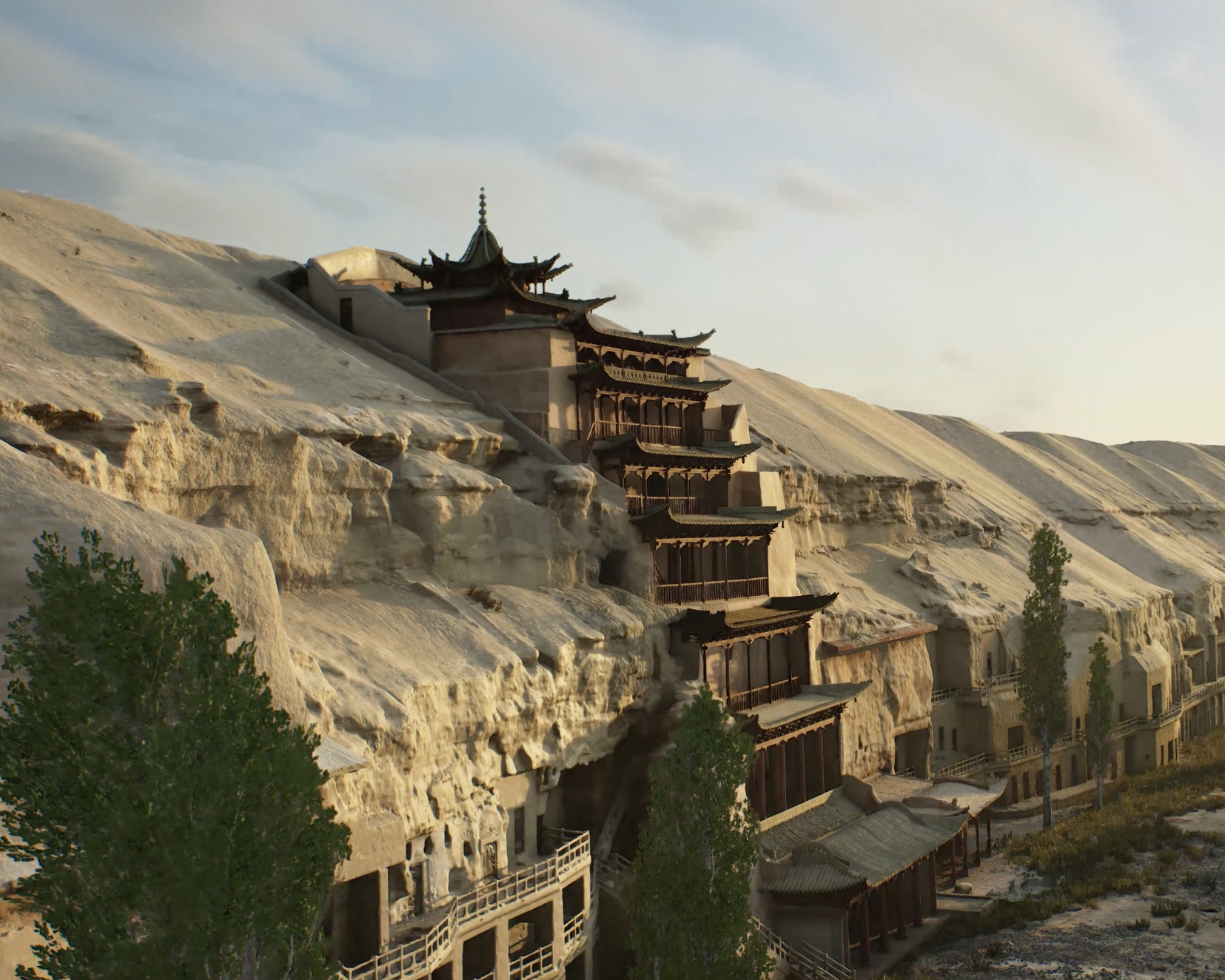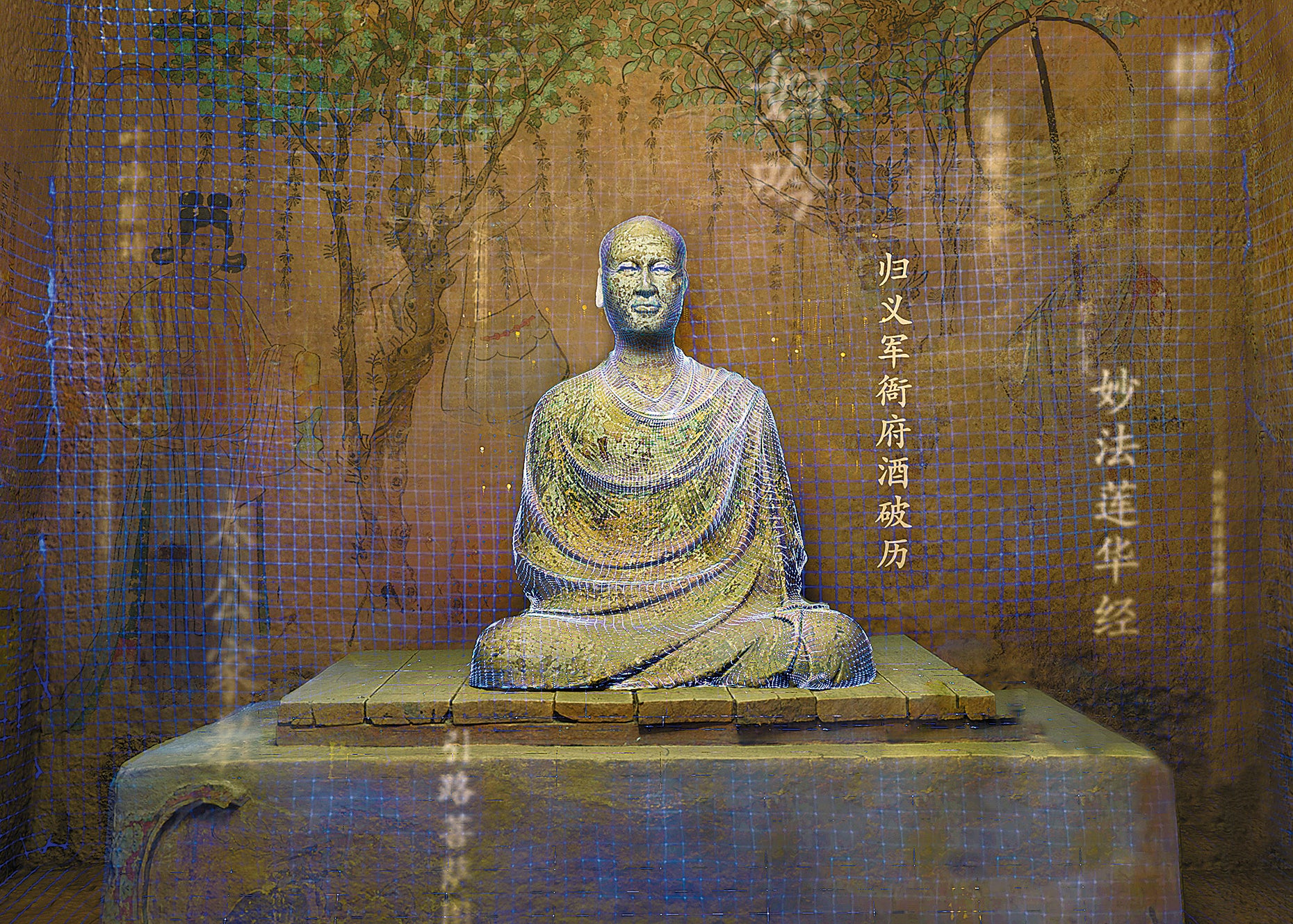Digital caves bring history to life
THE ARTICLES ON THESE PAGES ARE PRODUCED BY CHINA DAILY, WHICH TAKES SOLE RESPONSIBILITY FOR THE CONTENTS

For more than a century the Library Cave, or Cave 17 of the Mogao Caves of Dunhuang, in Gansu province, Northwest China, has been renowned for its extraordinary collection of relics and a tale with twists and turns.
To many who have had their curiosity piqued and want to know more about its legendary past, the Gobi Desert and the arduous journey to get there has deterred them from visiting to see for themselves the grandeur of the Dunhuang frescoes, and preservation requirements have resulted in limits on the number of visitors allowed access.
However, the Digital Library Cave, established last year by the Dunhuang Academy in conjunction with the technology company Tencent, has become yet one more way in which the public can get a virtual glimpse of the ancient wonder.
With technological solutions and narratives that are usually seen in digital games, such as comprehensive use of the latest gaming technologies including digital photogrammetry 3D modelling, game engine rendering, and cloud gaming technology, it provides an immersive, easily accessible, and innovative digital cultural experience.
This includes a 1:1 high-precision digital recreation of the Dunhuang Library Cave, ensuring a faithful representation of its intricate details and historical significance. These features not only offer users a realistic encounter with the physical grottoes but also present re-created historical scenes, meticulously crafted through the collaborative efforts of scholars and engineers.
Through its English and French versions made available on the website Digital Dunhuang this month, people around the world can go on a digital tour of the Mogao Caves, the charm of which is deeply rooted in the city of Dunhuang, historically serving as a choke point for trade, religious and cultural exchanges along the ancient Silk Road.
Su Bomin, director of the academy, said: “The project has enabled the relics to come alive with new means of expression. It makes the value of these relics more accessible to the audience, especially young people.”
In 1900, when Wang Yuanlu, a Taoist priest, discovered the Library Cave by chance and opened the entrance of the sand-buried treasure trove, more than 60,000 Buddhist manuscripts, documents related to government and social economy, silk paintings, embroidery and sacred articles, among other things, were brought to light after being hidden for nearly 1,000 years.
Rows of scrolls, dating from the fourth century to the 11th century, were piled up from floor to ceiling in the square chamber, which is 8.5 feet in length and width and 9.8 feet high, making it one of the most important archaeological discoveries of the 20th century.
While the Dunhuang frescoes have recorded the glories of the past visually, the items of literature housed in the Library Cave have kept the historical essence through the written word, said Zhao Xiaoxing, director of the Dunhuang Textual Research Institute, Dunhuang Academy.

“The impressive collection of literature in the Library Cave represents one of the most inclusive, advanced and open facets of the ancient Chinese.”
Zhao wrote the scripts and storyline for the game-like programme, based on the academy’s decades of research.
Today in Cave 17 a painted statue of Hongbian, chief of monks and a politically influential figure when the cave was built in the mid-ninth century and is said to have owned the cave, sits on a bed of earth, meditating.
The statue was originally found in Cave 362, nearly three storeys above Cave 17.
In the 1960s Chang Shuhong (1904-94), the first director of the Dunhuang Academy, suggested moving it to Cave 17, which, as it turned out, seemed to fit the setting perfectly. This indicated that the statue was probably there originally but was later moved to the upper cave to make room for the manuscripts.
“The Digital Library Cave is a combination of art, academic research and technology,” said Li Hang, vice-president of Tencent’s corporate marketing and public relations, adding that it lowers the threshold required to learn about the cave and the relics.
